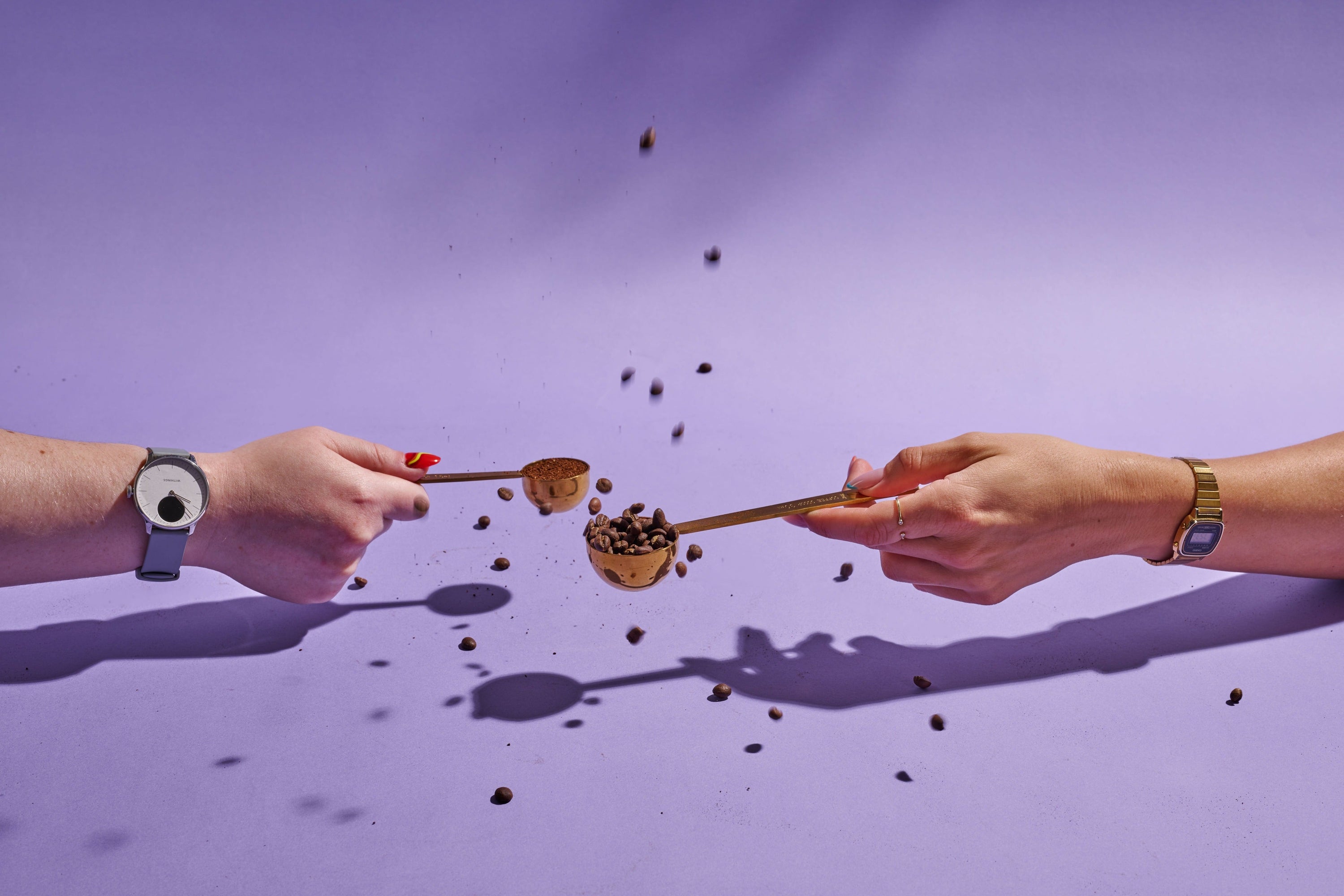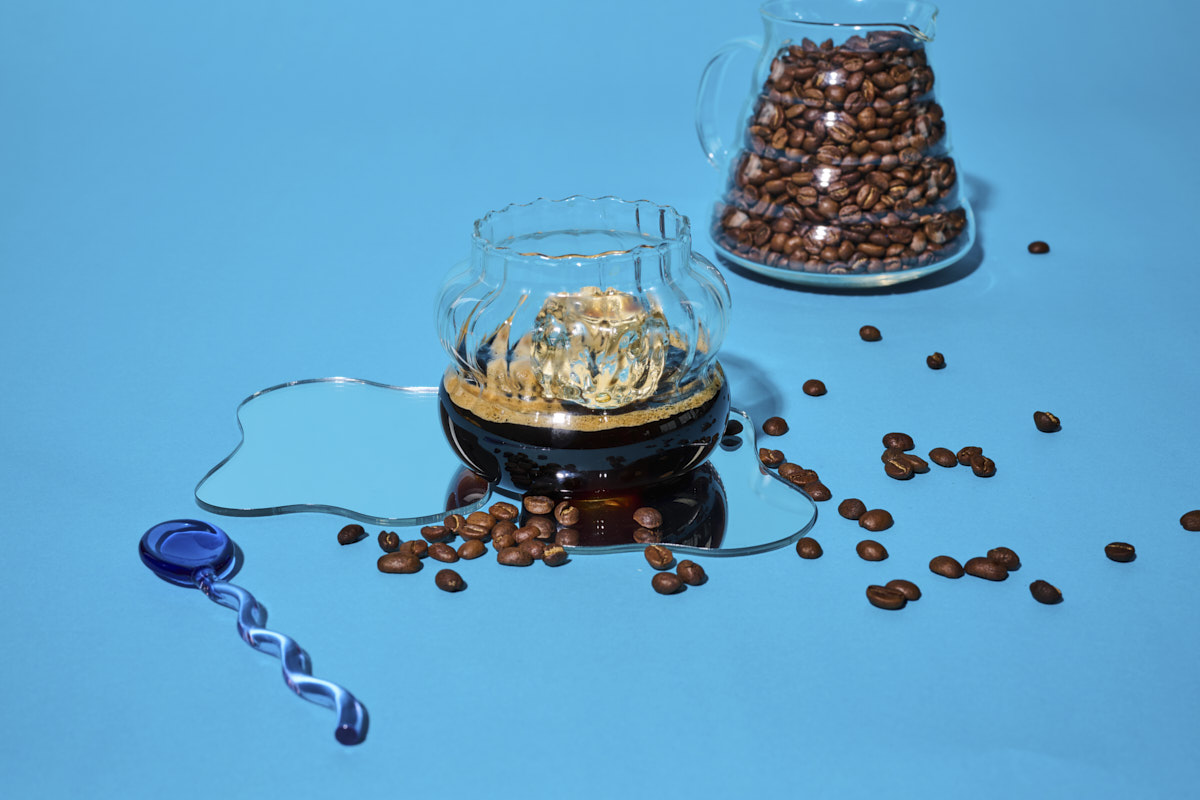Your pressing decaf questions, answered.
Historically, decaf was treated like a bit of an afterthought. Sure, coffee roasters offered a decaf option, but it was far from their best work. When we developed our Daydream decaf, we took the opposite approach—sourcing the best decaf beans and roasting coffee with the same attention to detail we give to our caffeinated blends. To get the skinny on all things decaf, we sat down with Tag head roaster Levi Hartsfield and asked him about this misunderstood coffee variety.
How do you make decaf coffee?
To make decaf coffee, a coffee bean processor has to extract the caffeine from the beans one way or another. Traditionally, this involves soaking the beans in a solution of natural chemicals. Most coffee companies use a methylene chloride (or “MC”) decaffeination process with ingredients derived from banana peels. But we prefer an ethyl acetate (“EA”) decaffeination method derived from sugarcane. The EA method imparts less flavor on the beans, letting their natural tasting notes shine through. Coincidentally, our Daydream decaf has notes of banana, but is not made through the MC (banana peel) process—that’s just the natural flavor of the beans! Once we have our decaf beans, we carefully roast them just like every other batch of coffee beans, creating a coffee that’s sweet and smooth.
What is Swiss water decaf coffee?
“Swiss water” decaf is decaf that’s been made with an alternative coffee extraction process. Green coffee beans are soaked in water to create a green coffee extract, which is then passed through special filters to remove caffeine. We like this technique as well, but it tends to be more expensive and can sometimes remove too much of the beans’ natural flavors. We prefer the EA process, which is closer to the Swiss water technique than most traditional methods, but avoids some of its setbacks.
What makes the best decaf coffee?
Okay, we’re biased, but we think that combination of the EA process, our Peruvian beans and the Tag roasting style creates the best decaf coffee we’ve ever tasted. It is not “lesser” in any way, but another arrow in our quiver and something that’s worthy of the Tag coffee name.

Does decaf coffee taste different?
Most decaf coffee has a taste that’s lighter, more watery and “hollow” compared to a caffeinated coffee. But what’s different about our Daydream decaf is that because of our mindful sourcing and roasting process, our decaf still tastes full-bodied and flavorful. In fact, when we first developed Daydream and shared it with friends and family, some of them went several days without realizing it was decaf.
Is decaf coffee acidic?
Decaf is usually not acidic; in fact, great decaf is usually rather sweet. In our experience, any extreme bitterness or acidity that you taste in coffee comes from brewing it for too long, rather than from the coffee itself. Make sure you’re brewing your coffee in a quick and efficient way, and you’ll avoid bitter flavors. For example, a pour over should only take about three minutes to make.
Is there a brewing method that’s best for decaf?
Our Daydream decaf is especially great in a pour over or drip machine, but the solubility of decaf means that it’s an excellent choice for any brewing method. If you’ve never tried our pods before, this could be the time to give them a spin—we specially formulated them to create the best pod coffee you’ve ever tasted.

Okay, the science lesson is over—time to pour ourselves a cup or two! Put some Daydream decaf into your rotation and you may never go back :)




